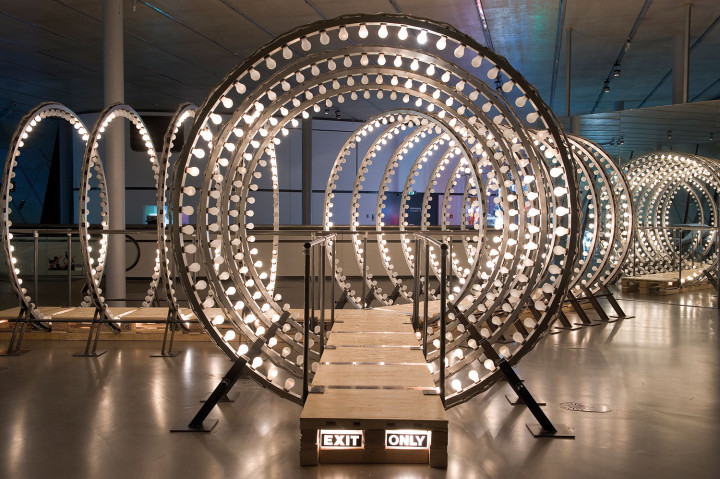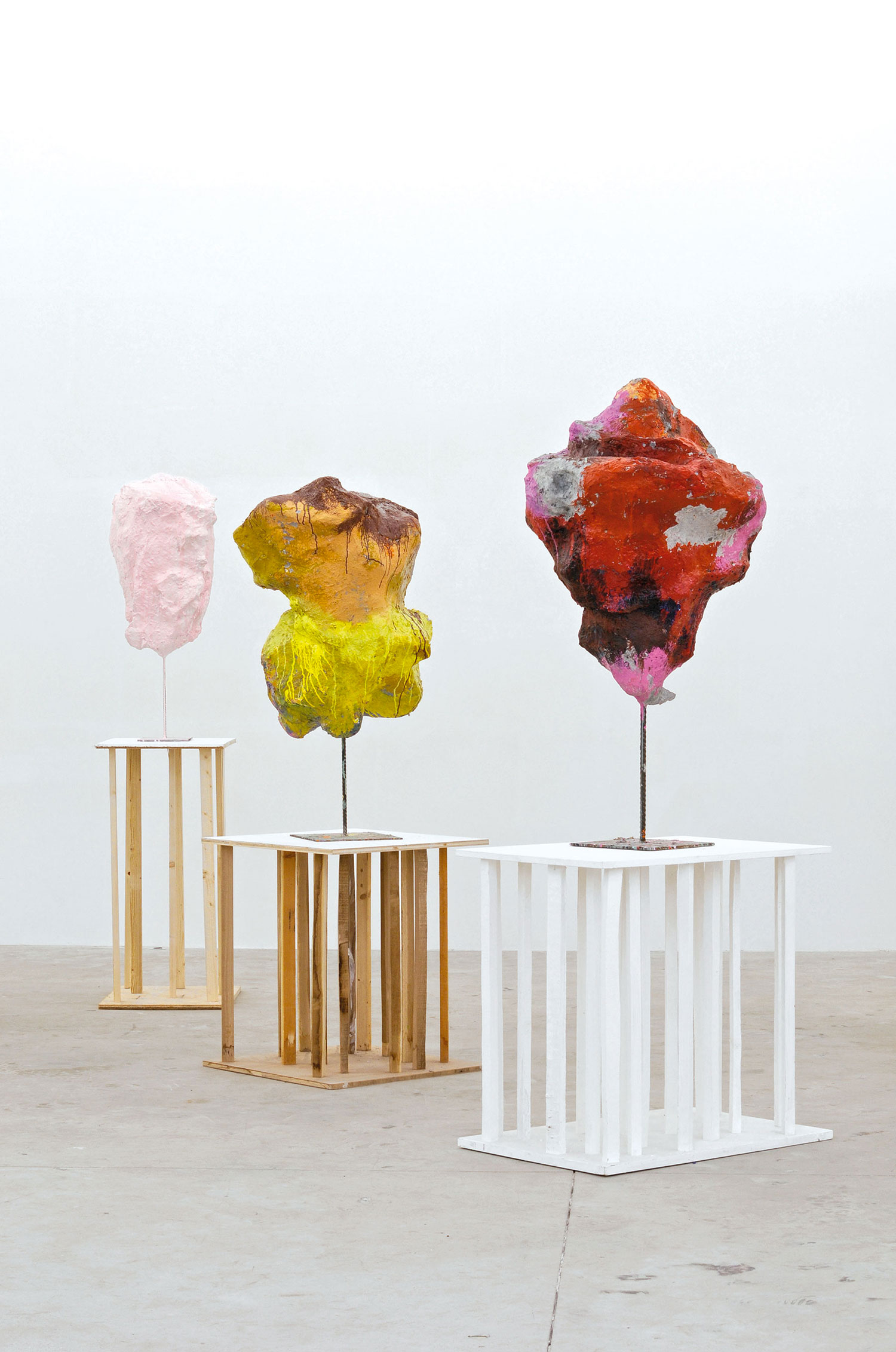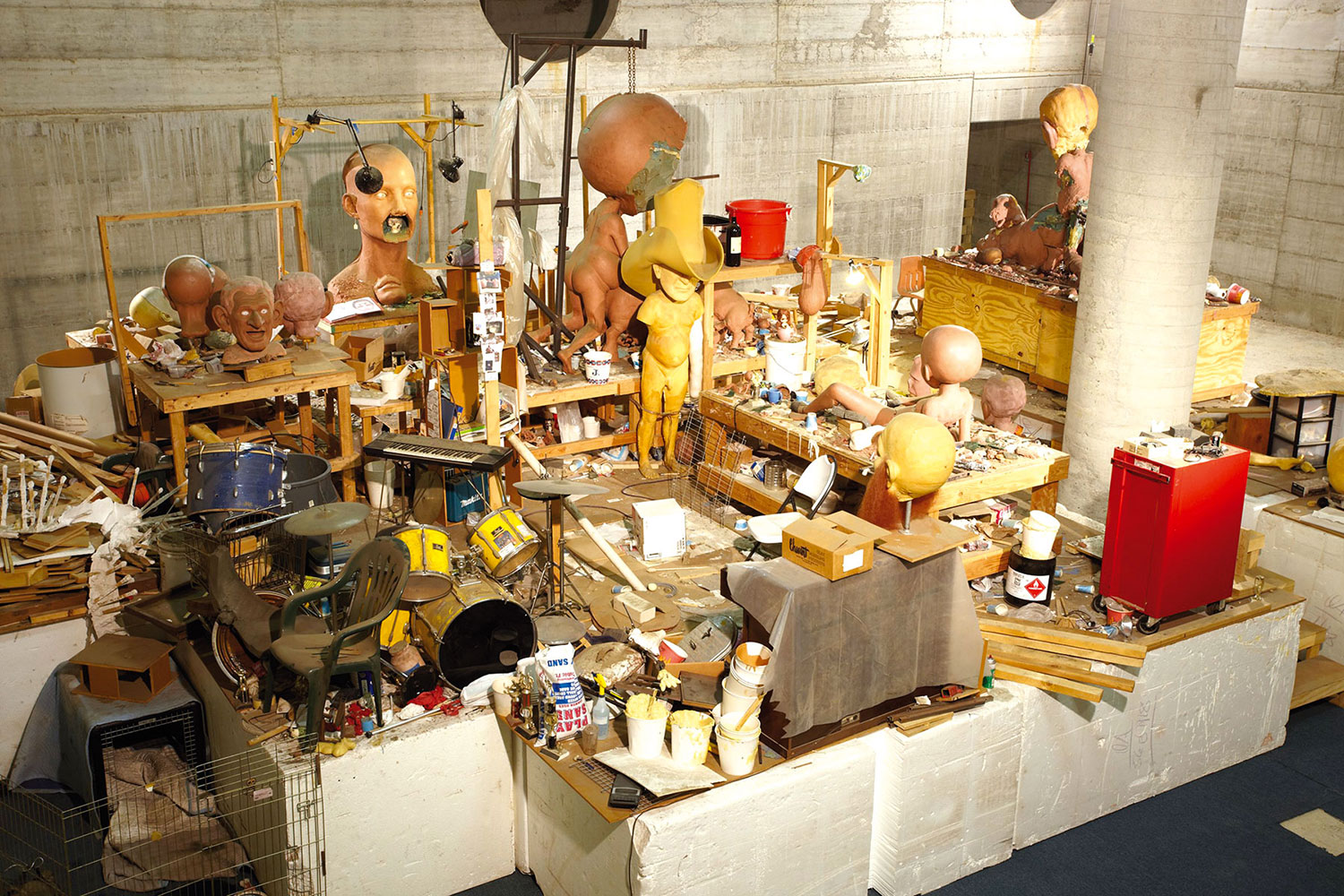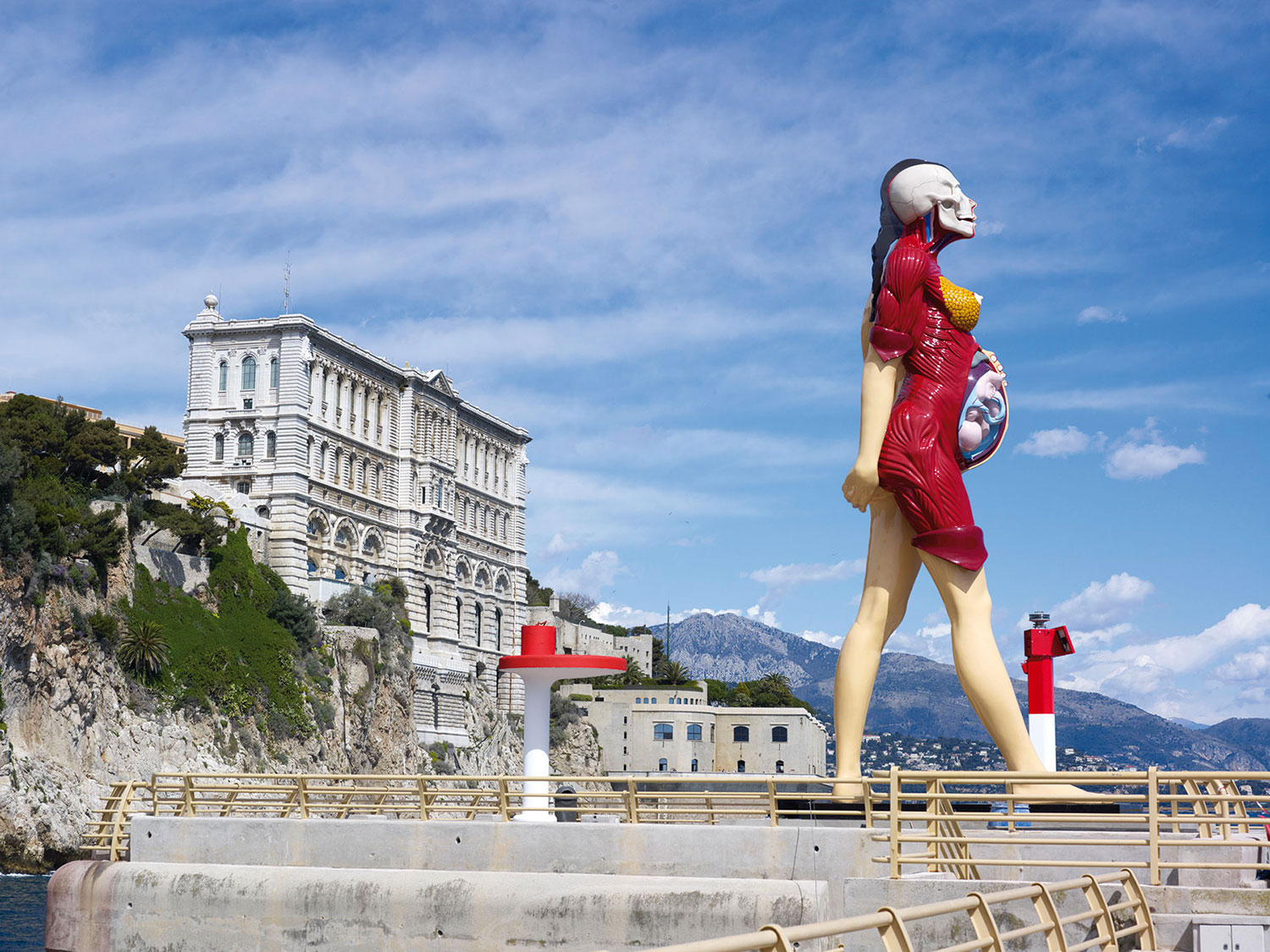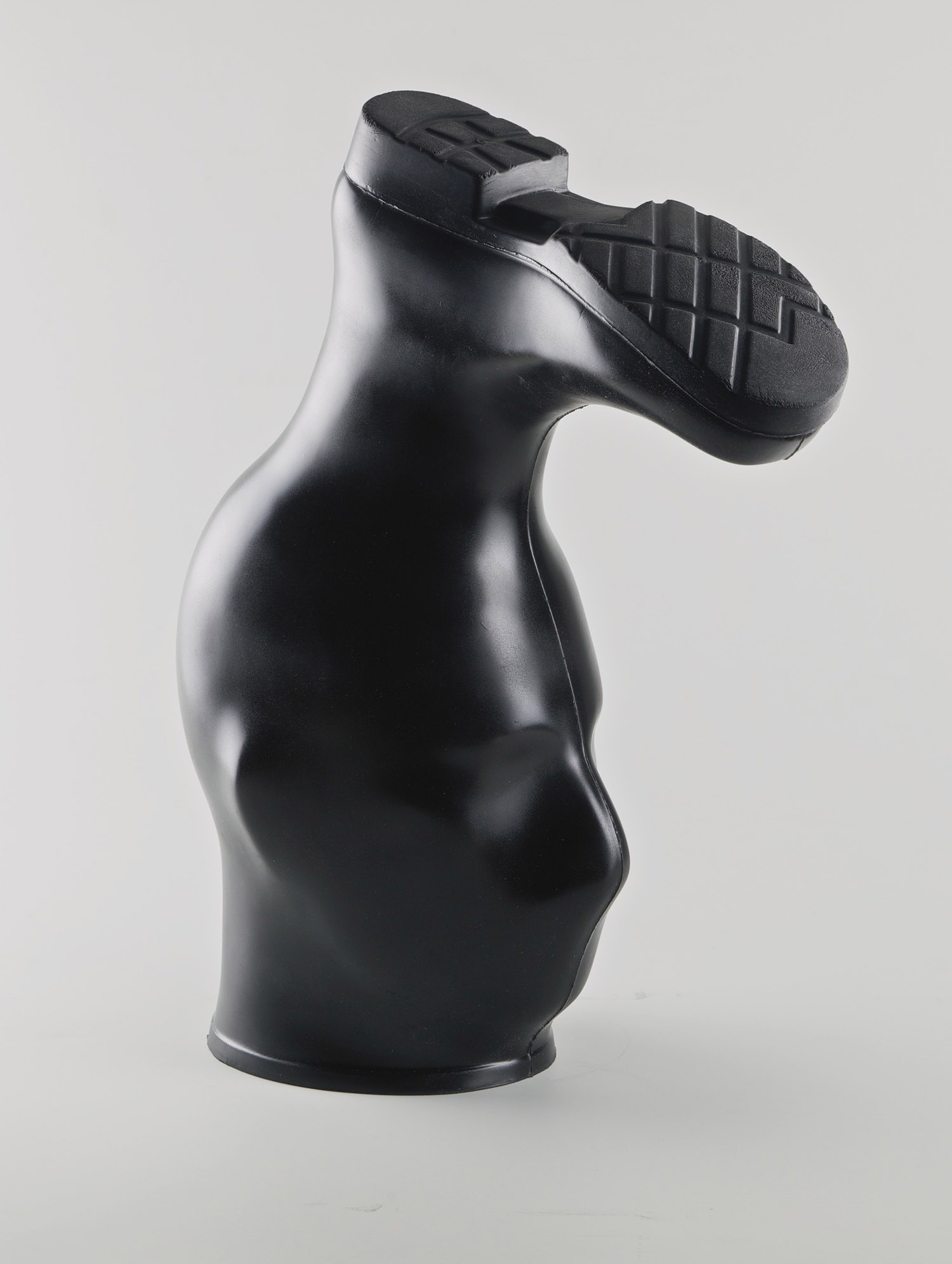
As a collector, philanthropist and activist, Francesca von Habsburg is determined to leave her mark. The daughter of the late Baron Hans Heinrich Thyssen-Bornemisza and model Fiona Frances Elaine Campbell-Walter, von Habsburg was born in Lausanne, Switzerland, in 1958. In the ’80s she held an important place in London’s legendary club scene, and even attended Central Saint Martin’s College of Art before ultimately being thrown out after a tiff with a professor. In 1993 she married Karl Habsburg, grandson of the last Austro-Hungarian Emperor. It was in 2002 however that she opened Thyssen-Bornemisza Art Contemporary (T-B A21) in Vienna and began to establish herself as a major figure in the world of contemporary art. With the inauguration of T-B A21’s most recent project The Morning Line in Istanbul, I asked von Habsburg about her activities as a collector and philanthropist.
Alexander Ferrando: Since 2002 you have run T-B A21 in Vienna. What led to its founding?
Francesca von Habsburg: The first project we did as T-B A21 was Janet Cardiff’s exhibition “Walking thru’ ” (2004). I fell in love with a work of art by her in 2001, which I saw at P.S.1 in New York. It was magical, a new experience. She brought this astounding musical installation to life. The name of the work is The Forty-Part Motet (2001). She placed 40 choir singers, each singing their own part, on different spots in a room. You were able to listen to each and every individual voice — something that is not possible in a common choir. The concept of creating a new and breathtaking experience in such a simple way fascinated me. I wanted to buy this work of art but it was not for sale. When all the galleries refused to sell it to me, I realized that her work is so huge that it is better viewed in a museum than hidden away in a private collection. I founded Thyssen-Bornemisza Art Contemporary because it was the only way that serious artists would part with their better works. They are suspicious of collectors who only put their collection in storage. It is important to share art, to promote it, and to generate innovation through commissioning new works.
AF: What is the driving force and ultimate goal of the foundation?
FVH: My approach to collecting aims at reflecting the changes in contemporary art practice by commissioning works and supporting multi-disciplinary projects, by working with both established and emerging artists of different ages and at different stages of their careers. The ‘Pavilion idea’ is one of the core programs of the foundation. It’s about these interdisciplinary commissions, combining expertise in architecture, art, music, science, etc., and moving around the world to the most different locations and contexts. I thought that having these pavilions all over the world would inspire people to get into contemporary art.

AF: Matthew Ritchie, Aranda\Lasch’s and Arup AGU’s The Morning Line (2010) is one of the more ambitious of T-B A21’s projects. Could you tell us more about it and its development?
FVH: The Morning Line in fact is T-B A21’s most ambitious project to date, and it is the one that has taught me the most. I am curious by nature and this project is the result of many different disciplines that come together. It is a platform for contemporary music and composition, and at the same time is a public art structure — eight meters high and 20 meters long, built of 17 tons of coated aluminum — which explores the disciplinary interplays between art, architecture, music, mathematics, cosmology and science. It is a groundbreaking, innovative project because it binds together so many different disciplines into one, confusing a few and delighting many! I am thrilled to bring it to Istanbul because I love to see the juxtaposition of a city so deeply set in cultural heritage contrasting with a multi-dimensional contemporary art/architecture/music project. It’s the perfect setting for The Morning Line because we all understand art of the future when we can appreciate the art of the past. It puts greatness into perspective.
AF: At the 2009 Venice Biennale, T-B A21 — along with Columbia University — co-organized the panel discussion “The Last Temptation of the Contemporary. Art/Architecture Experimentation with Heritage.” What were the main points of that discussion and how were they relevant to the foundation itself?
FVH: The symposium brought together a group of artists, architects, historians, collectors, critics and curators to discuss the new forms of dance between experimental work and heritage. Jorge Otero-Pailos’s The Ethics of Dust: Doge’s Palace, Venice 2009 exhibited in the Arsenale was the starting point to think on historic preservation and contemporary art. When contemporary artists or art institutions increasingly thread themselves into the very fabric of historical neighborhoods, a whole new kind of conversation is necessary. The gallery is turned inside-out and the street is turned outside-in. A new wave of experiments actively erases the line between art and architecture to rethink the future of the past.

AF: Beyond Austria’s historical relationship with the so-called ‘Central’ and ‘Eastern’ European regions, there has been major investment and attention given to countries in those regions from both the Austrian public and private sectors. In what way has T-B A21 itself engaged with ‘Central’ or ‘Eastern’ Europe’s cultural landscape?
FVH: In 2006 we organized the itinerant exhibition “Küba: Journey against the Current.” Aboard the converted container barge Negrelli, Turkish artist Kutluğ Ataman’s award-winning film installation Küba (2005), in which he interviewed residents of the settlement in Istanbul called slum Küba, sailed down the Danube River from Romania to Vienna through seven nations. A geographic space with specific social, political and cultural contexts unfolded; at each stop — in Romania, Bulgaria, Serbia, Croatia, Hungary and Slovakia — a new artwork specifically commissioned by T-B A21 was presented in dialogue with Ataman’s original installation to react and respond to the questions, contents and issues of Ataman’s Küba with independent projects and works within the context of their own socio-political environments. In Turkey, we have embarked on numerous socially informed projects with a broad geographic scope. This year we have the opening of “Tactics of Invisibility” showing 15 contemporary Turkish artists. With The Morning Line in Istanbul we are hoping to build a cultural bridge between Vienna and Istanbul. This reflects my commitment to celebrating both cities’ rich cultural heritage and their dense and lively contemporary spirit and cultural practice.
AF: Your father, Hans Heinrich Thyssen-Bornemisza, amassed one of the great collections of art in Europe. In what ways did his activity as a collector and the collection itself influence your engagement with art and collecting?
FVH: I am a fourth-generation collector; there is a long collecting tradition in my family. My grandfather was a great friend of Rodin and was a great supporter of his, and commissioned several big sculptures from him. My father inherited a great part of the collection and developed his own passion by trying to reassemble works from his brother and sisters. In the late ’50s he started collecting modern art, very much encouraged by my mother. By the end of his life my father had collected over 1000 paintings, many of which were extremely rare, and of the highest quality. I collect in a new way. The passion of collecting to me arises from commissioning new projects and collaborating with artists — that’s the inspiring and highly addictive part. So I wouldn’t call myself so much a collector but rather a generator of projects, a philanthropist. I want to fulfill dreams and be a philanthropic producer.
AF: Could you tell us about other upcoming international projects?
FVH: The exhibition in Gijon (Spain) with highlights from the collection; the opening of “Tactics of Invisibility” at TANAS (Berlin) and ARTER (Istanbul); “The Kaleidoscopic Eye” in Budapest in 2011; a new building in Vienna; three new commissions; a symposium in Venice during the Architecture Biennale; and two new publications! We are very busy!

